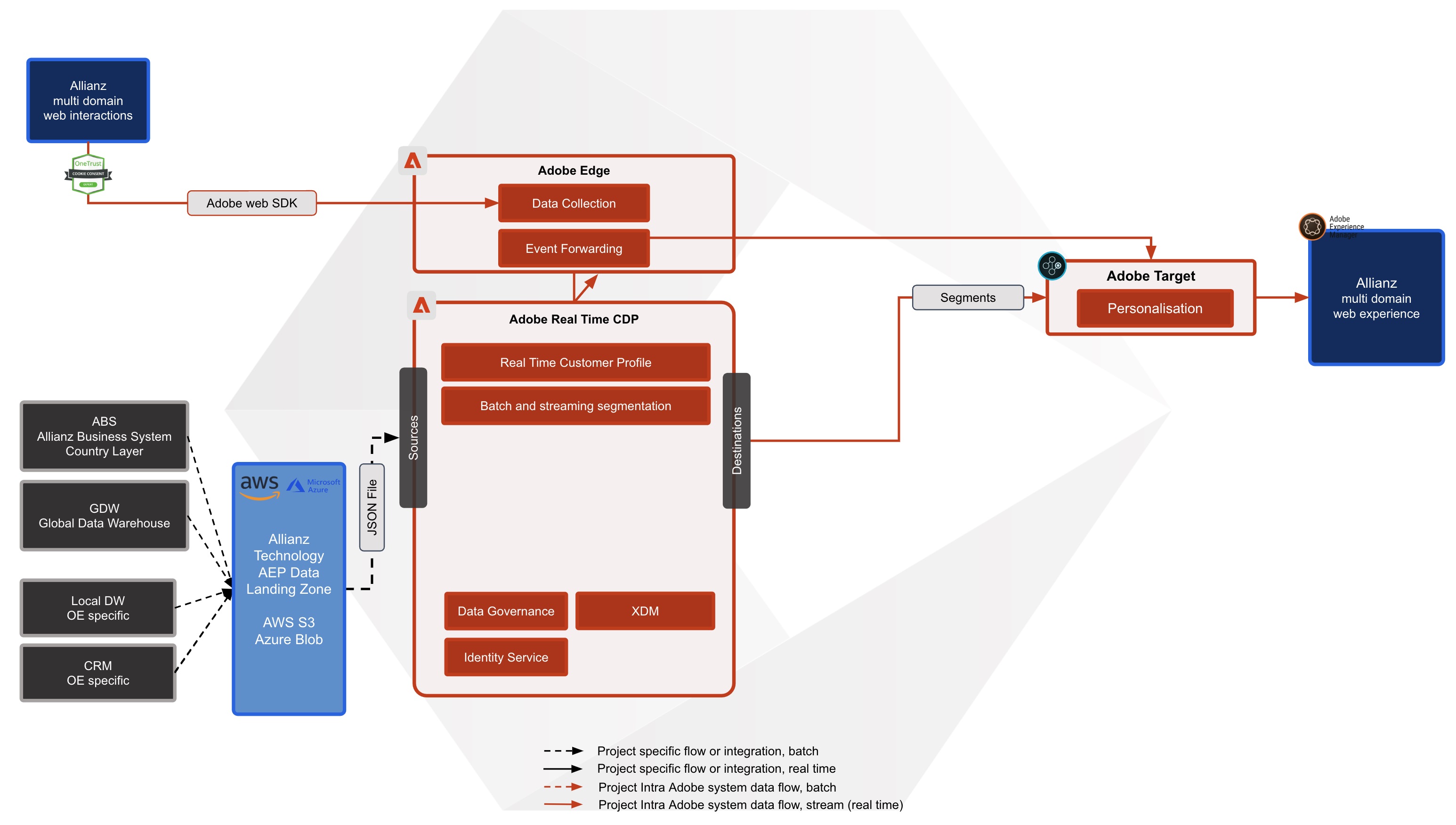For this use case, we wanted to track a user's web behavior and merging it with backend data from other sources like ABS, GDW, CRM, etc.
To track the user behaviour data on the website, we implemented the AEP Web SDK, that sends user website activity data to AEP Real-Time Customer Data Platform (RT-CDP) along with the ECID (default Adobe Experience Cloud ID which is fully anonymized and unique to each user). Moreover, we intent to capture some custom identifier from the OE context. This could potentially act as primary key for stitching this anonymous user to a user identity from the backend data.
The data from the backend system is ingested using batch-upload functionality by the OE´s backend team, and this data is uploaded to the OE specific Data Landing Zone environment as illustrated in the 'Architecture' tab. Once this data is in the Data Landing Zone, AEP which has a pre-built connection to this Data Landing Zone, can safely/securely ingest this data into RT-CDP.
Now, these two different user information are merged/stitched whenever a successful match is established. With this matched data, we can further distinguish/allocate these users to different audience segments based on their traits or profile attributes.
This segment of users can then be pushed in real-time for personlization and experience targeting to the tools like Adobe Target.
To track the user behaviour data on the website, we implemented the AEP Web SDK, that sends user website activity data to AEP Real-Time Customer Data Platform (RT-CDP) along with the ECID (default Adobe Experience Cloud ID which is fully anonymized and unique to each user). Moreover, we intent to capture some custom identifier from the OE context. This could potentially act as primary key for stitching this anonymous user to a user identity from the backend data.
The data from the backend system is ingested using batch-upload functionality by the OE´s backend team, and this data is uploaded to the OE specific Data Landing Zone environment as illustrated in the 'Architecture' tab. Once this data is in the Data Landing Zone, AEP which has a pre-built connection to this Data Landing Zone, can safely/securely ingest this data into RT-CDP.
Now, these two different user information are merged/stitched whenever a successful match is established. With this matched data, we can further distinguish/allocate these users to different audience segments based on their traits or profile attributes.
This segment of users can then be pushed in real-time for personlization and experience targeting to the tools like Adobe Target.

